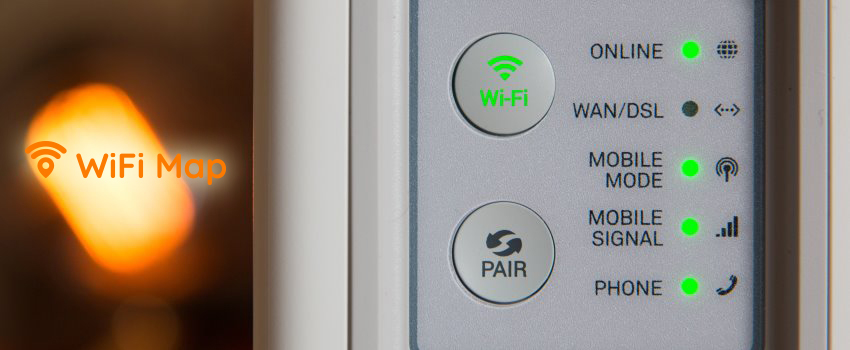All Hidden Things How WiFi Works
A WiFi network is a wireless internet connection that lets internet compatible devices (with wireless access points) communicate without having to worry about physically connected via Ethernet cable. It is the most popular method of connection. A WiFi device transmits electromagnetic waves (radio waves) through a transmitter connected to an antenna, radio waves carry required information. Radio waves are then caught by the receiver (installed in wireless access point compatible devices) and decoded and internet access is granted to connected devices.
One of the world’s most mainstream network innovations include WiFi, Wi-Fi connections bolster many individuals in homes, public localities, and business organizations all around the world. It is extremely undermined as it has become a common part of our daily lives. Wi-Fi, from the client’s point of view, is simply web access from a wireless gadget such as Mobile phones, tablet devices or Personal Computer. We surely don’t have a clue about the nuts and bolts of how Wi-Fi works, and what hidden features it has.
Regardless of how the Wi-Fi is being used and how it’s connected, the outcome is dependably the usual: a wireless signal that gives different gadgets a chance to connect with the fundamental transmitter for communication, to transfer documents or convey voice messages. Most present-day gadgets support Wi-Fi, So, it can get to a network to get web access and share web resources. Following is an introduction to Wi-Fi basics to give you a better, and comprehensive understanding of how WiFi functions.
Broadband Routers Are Also Wi-Fi Access Points:
Broadband routers today also have wireless Access Points, it gives WiFi compatibility to a wired network (connected via Ethernet LAN). One main reason behind why wireless broadband routers make home systems a lot simpler to manufacture is that they work as Wi-Fi AP. These home routers perform multiple valuable functions such as running a system firewall.
Wi-Fi Connections Do Not Require an Access Point:
There is a misconception among people as they think they have to discover a router, an open hotspot or another access point to set up Wi-Fi associations. This isn’t true!
Wi-Fi additionally supports a connection, called ad hoc mode, that enables gadgets to connect easily with each other in a basic shared system.
Not All Wi-Fi Types Are Compatible:
Industry sellers made the main variant of Wi-Fi (802.11) in 1997. The market for customer items detonated in 1999 when both 802.11a and 802.11b wound up authority models. Some accept that any Wi-Fi systems can coordinate with some other Wi-Fi systems as long as the entirety of their security settings match. While the facts demonstrate that 802.11n, 802.11g and 802.11bWi-Fi standard hardware can network together, whereas, the 802.11a standard cannot network with any of these. Many compatibility issues can come in between these Wi-Fi devices from various sellers if they make their devices compatible with non-standard extensions. Luckily, these compatibility issues are not seen so frequently these days.
Wi-Fi Connection Speed Varies With Distance:
Your device will naturally get maximum speed when your device is nearby the WiFi network. The maximized speed is 54 Mbps for most 802.11g connections). As you move far from the Access point, your connection speed will drop to 27 Mbps, 18 Mbps, and maybe even lower. This is caused by the Dynamic rate scaling, it is a keen feature designed in your WiFi. In order to maintain a reliable connection over long distances while transmitting data wireless devices avoid flooding wireless connection with data and reconnection requests that happen once network client fall behind in processing received data
Wi-Fi Is Not the Only Form of Wireless Networking:
WiFi networking is commonly referred to as WiFi on social sites. While many different types of wireless technologies are in use, Wi-Fi is mainstream. Cell phones, for instance, normally utilize a mix of Wi-Fi together with 4G LTE or more established 3G frameworks.
Bluetooth connection is also a common wireless connection method commonly used between cellphones to transmit data at extremely slow speed or connection between cell phone and peripherals handsfree devices over a short distance.
A Wi-Fi Network Can Span Large Distances or Very Short Ones:
When it comes to the Wi-Fi network range is equally important as the speed of connection, typically ranges depend on the type of obstruction radio signal encounter in its path between the connecting devices. If the obstruction is heavy it will result in an exponential decline in signal strength, signal strength also declines if the distance between connected devices is more than the WiFi network range.
Wi-Fi range can be extended with the help of WiFi range extenders, with the help of powerful antenna these devices boost the signal to overcome obstructions in their path and be accessible to devices as far as 3 times the normal distance.
A WiFi is a lot more than just data being transmitted over the air, After reading this article individuals will never take a WiFi connection for granted because it’s so much more than an average internet connection.



